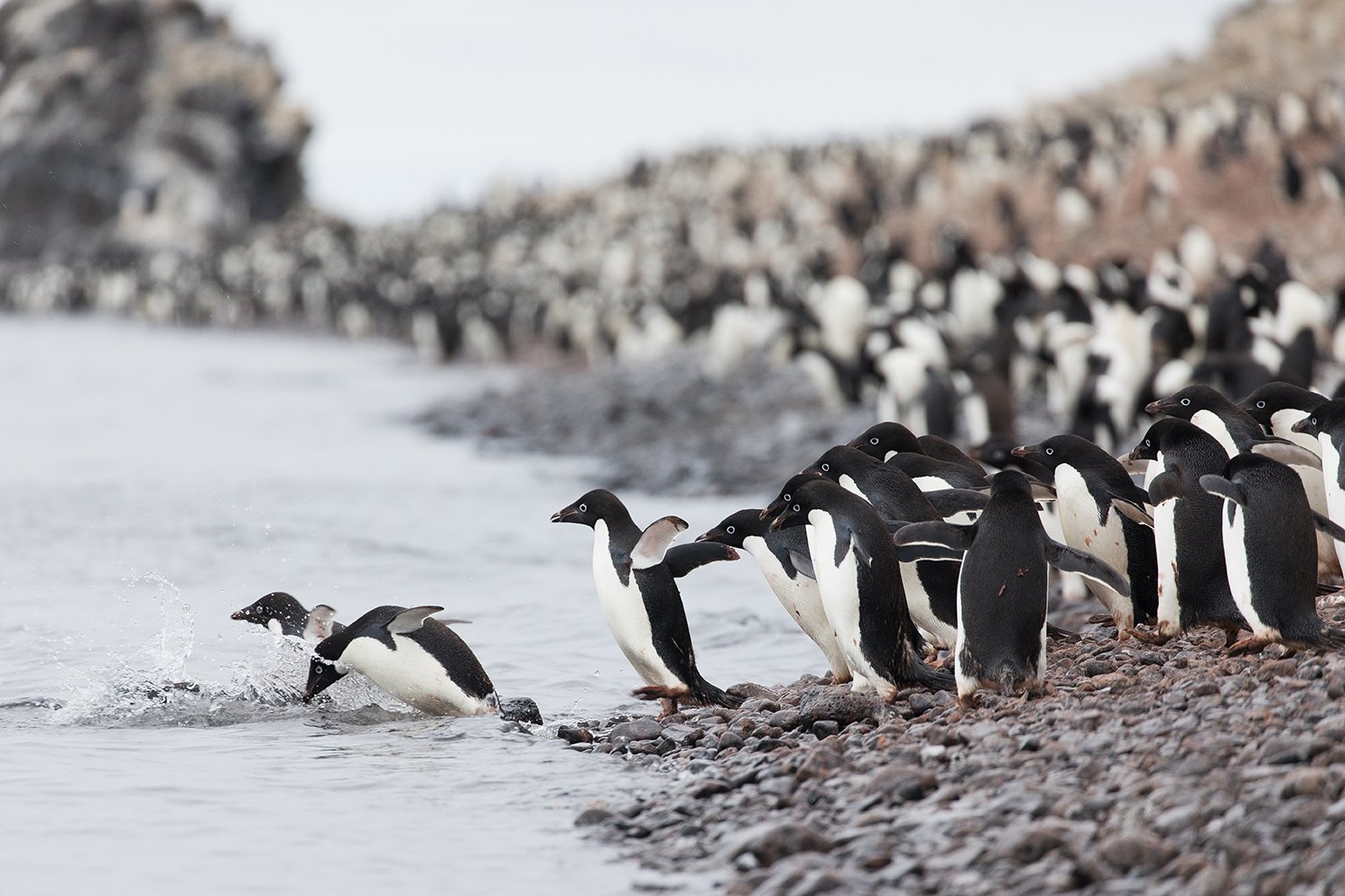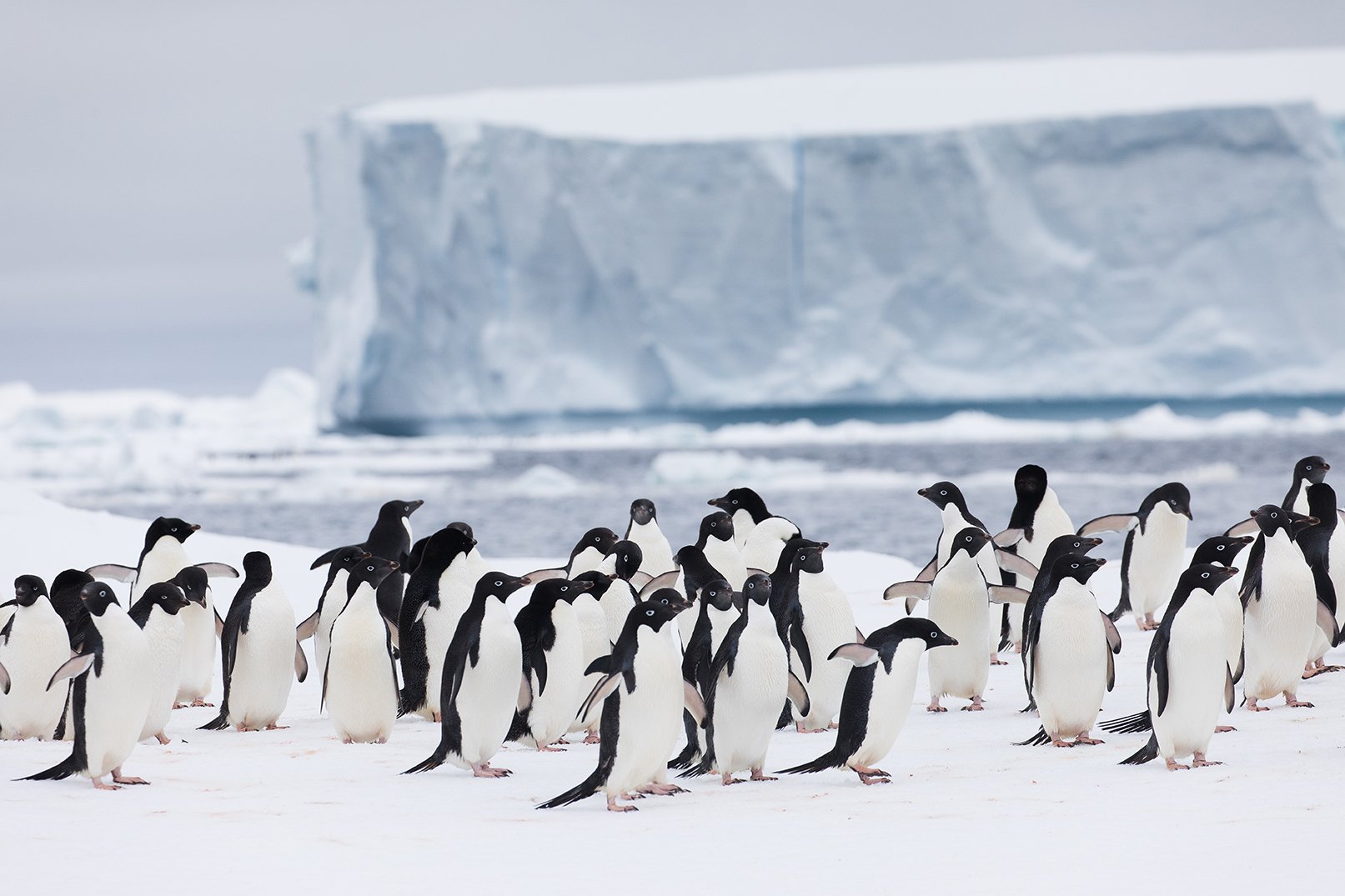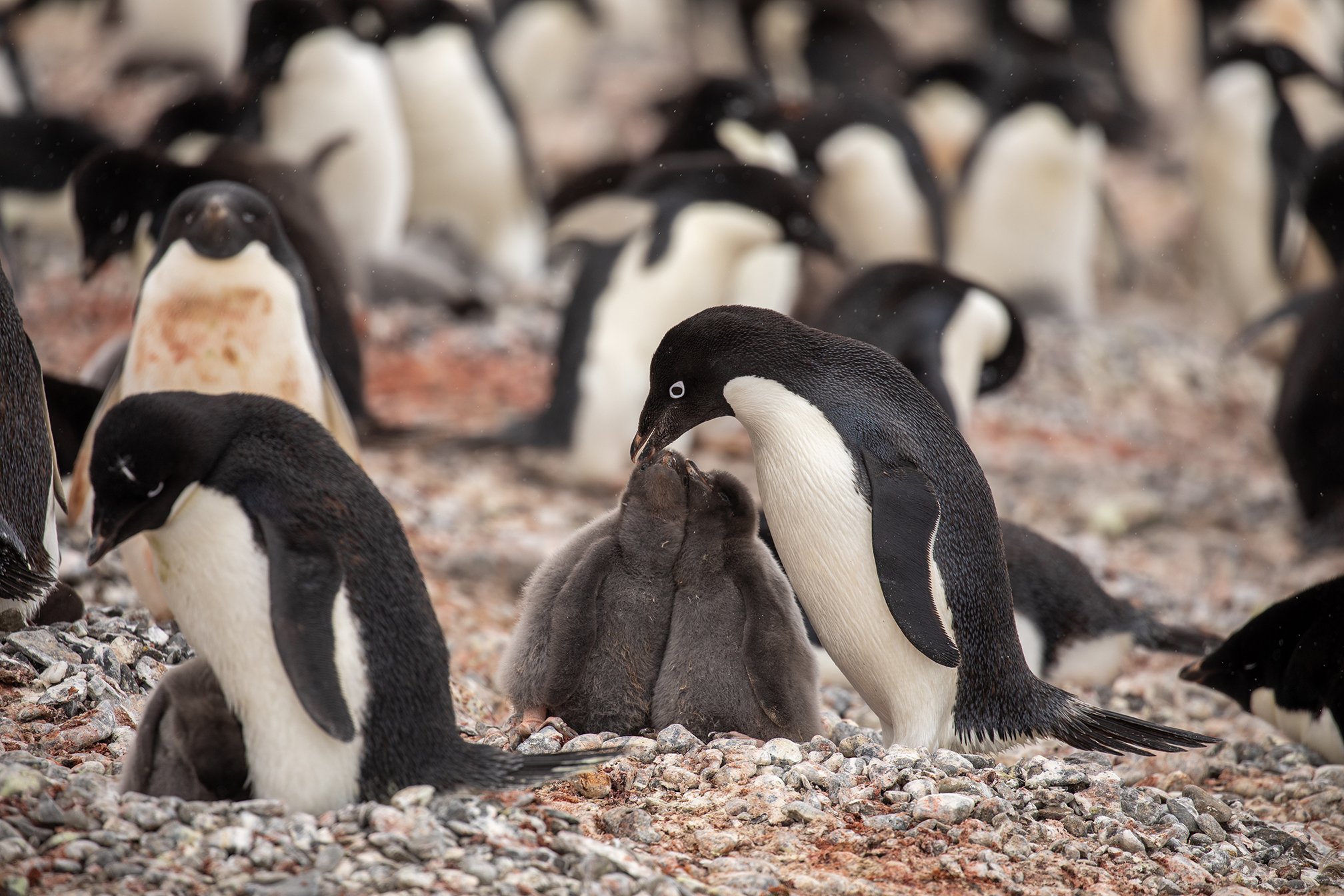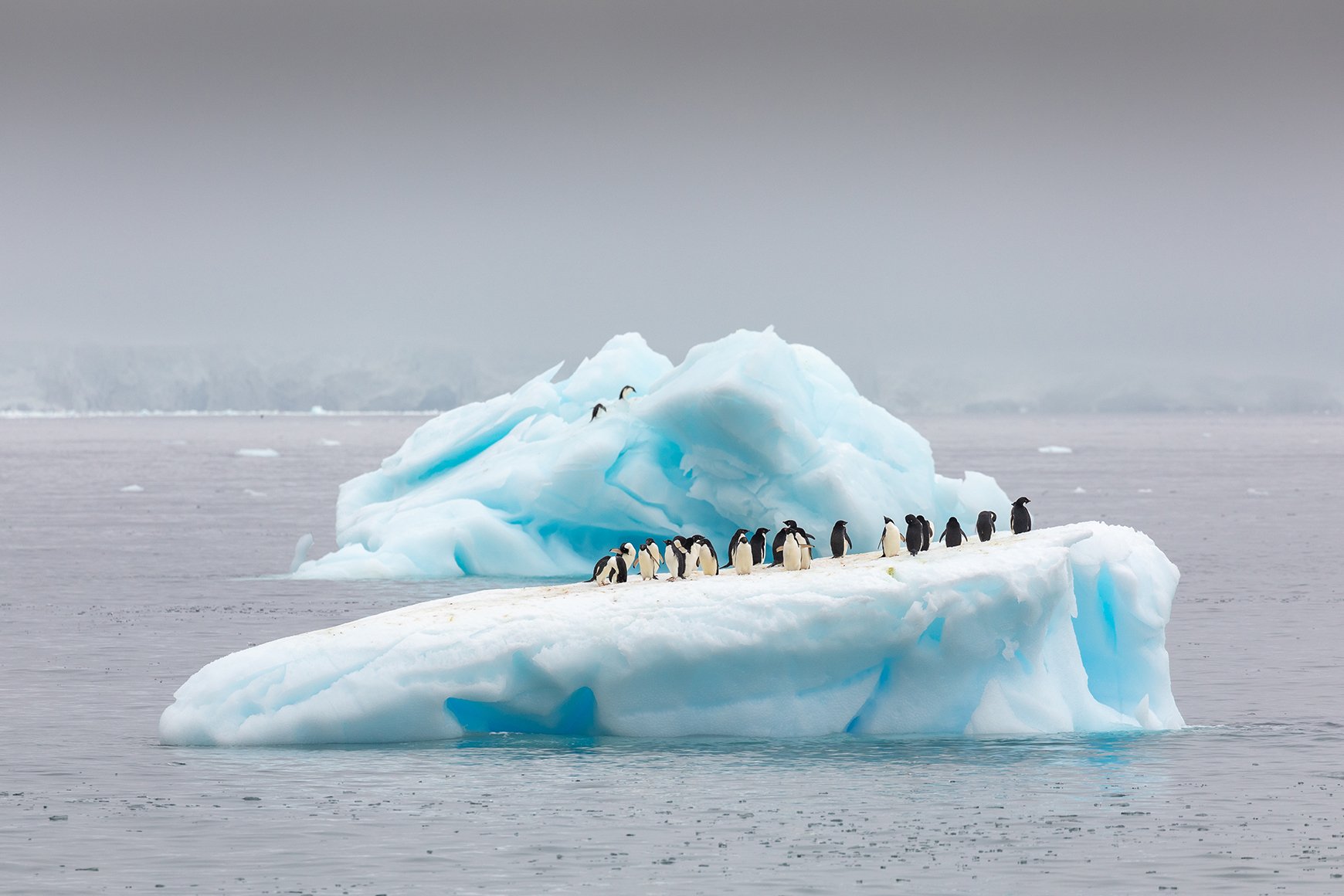The Humboldt penguin (Spheniscus humboldti) is a medium-sized penguin that lives in South America. Its nearest relatives are the African penguin, the Magellanic penguin and the Galápagos penguin. The Humboldt penguin and the cold water current it swims in both are named after the explorer Alexander von Humboldt.

Appearance
Humboldt penguins have a black head with a white border that runs from behind the eye, around the black ear-coverts and chin and joins at the throat. They have blackish-grey upperparts and whitish underparts, with a black breast-band that extends down the flanks to the thigh. They have a fleshy-pink base to the bill. The male is heavier and larger than the female and has a longer bill. Juveniles have dark heads and no breast-band. They have spines on their tongue which they use to hold their prey.
Distribution
Humboldt penguins are found only on the west coast of South America. They breed from southern Chile along the dry and arid coastal regions of the Atacama Desert to subtropical Isla Foca in north Peru. Their range is restricted to the coast and offshore islands affected by the Humboldt current, which provides a continuous supply of nutrients and food. In Chile, the most important breeding colony is at Isla Chañaral. Humboldt penguins are sedentary during the breeding season; they usually stay in proximity to their nests. They can cover large distances, particularly in response to food shortages or changes in environmental conditions. They are a true migrant between Peru and Chile. Humboldt penguins breed on cliff tops, caverns, hollows, cliff tops, beaches, and scrapes covered by vegetation.

Habits and Lifestyle
Humboldt penguins are highly social and communicative birds, gathering in large colonies, providing them protection from predators. They are excellent swimmers and see well both underwater and on land. Humboldt penguins are visual hunters. They leave their islands for foraging after sunrise and different populations have different preferred foraging distances from the colony. Their foraging rhythm depends on the light intensity. They spend more time foraging during overnight trips. Fish are mostly seized from below through short, shallow dives. Penguins, not rearing chicks, are able to be away from their colonies and can travel long distances, looking for new foraging areas. However, those, rearing chicks, generally tend to stay in the same area, foraging in shallow water. Humboldt penguins have different calls that they use to communicate in different ways. If an individual comes too close to an adult Humboldt penguin, the ‘Yell’ is a warning call which is followed by pecking or chasing if ignored. The ‘Throb’ is a soft call between pairs at the nest, used by incubating birds when their mates return to the nest. The ‘Haw’ is a short call given by juveniles alone in the water and by paired birds when one is on the water and the other is on land. The ‘Bray’ is a long call used to attract a mate and advertise a territory during the pre-laying and pre-hatching periods. The ‘Courtship Bray’ is similar to the ‘Bray’, however a different posture is assumed and is given synchronously by pairs during the pre-laying period: the birds stand together pointing their necks and head up, with flippers out to the side. The ‘Peep’ is given by chicks begging for food.
Diet and Nutrition
Humboldt penguins are carnivores (piscivores). Their diet primarily consists of pelagic schooling fish. Northern colonies consume primarily Atlantic saury and garfish, whilst southern populations primarily consume anchovy, Araucanian herring, silver-side, pilchard and squid.

Mating Habits
Humboldt penguins are monogamous and form pairs. The breeding season lasts from March to December, with the highest breeding activity in April and August-September. Before mating, the animals undergo a molting period of about 2 weeks, during which they do not go out to sea and have to starve. By the end of the molt, they finally venture into the sea to forage and return to their breeding grounds, where they mate. During courtship, Humboldt penguins bow their heads to each other and exchange mutual glances with each eye, alternatively. To attract a partner, the bird extends its head vertically, collapses its chest, flaps its wings, and emits a loud call resembling the braying of a donkey. The mutual displaying consists of the pair standing side by side repeating the actions once again. Humboldt penguins burrow their nests on the ground on guano layers and beaches, or nest on cliff tops. Usually, 1-2 eggs are laid and incubated for about 40 days. Both the male and female incubate the eggs alternately. When the chicks hatch out they are semi-altricial; both parents care for them, until the young reach the age of 70-90 days, when they gain their adult plumage. By that time, the young are fully independent and go to sea. They become reproductively mature and are ready to breed at 3 years of age.
Population
Population threats
Humboldt penguins are frequently tangled in fishing nets and killed by explosives, used by fishermen. They are threatened because of mining operations, conducted in the area of their range. The animals are captured for the illegal pet trade, food, as use as fish bait. Human disturbance is among other serious threats to this species’ population; in the northern part of Chile, an important breeding site of Humboldt penguins is presently in danger due to the construction of 2 coal-fired power stations in the area.
Population number
According to the IUCN Red List, the total population size of the Humboldt penguin is 23,800 mature individuals. The breeding population in Chile consists of 5,100 breeding pairs, equating to 10,200 mature individuals. In Peru, the population is estimated to be 13,600 individuals. Currently, this species is classified as Vulnerable (VU) on the IUCN Red List, and its numbers today are decreasing.




.jpg)























